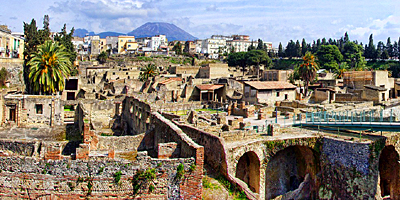
Herculaneum

The archaeological excavations of Herculaneum have revealed the remains of the ancient city of Herculaneum, buried under a blanket of ashes, lapilli and mud during the eruption of Vesuvius in 79, together with Pompei, Stabia and Oplonti. Randomly found following excavations for the construction of a well in 1709, archaeological investigations in Herculaneum began in 1738 to last until 1765; resumed in 1823, they were interrupted again in 1875, until a systematic excavation promoted by Amedeo Maiuri starting from 1927: most of the finds found are housed in the National Archaeological Museum of Naples, while in 2008 the birth of the virtual archaeological museum is shows the city before the eruption of Vesuvius.
|
|








